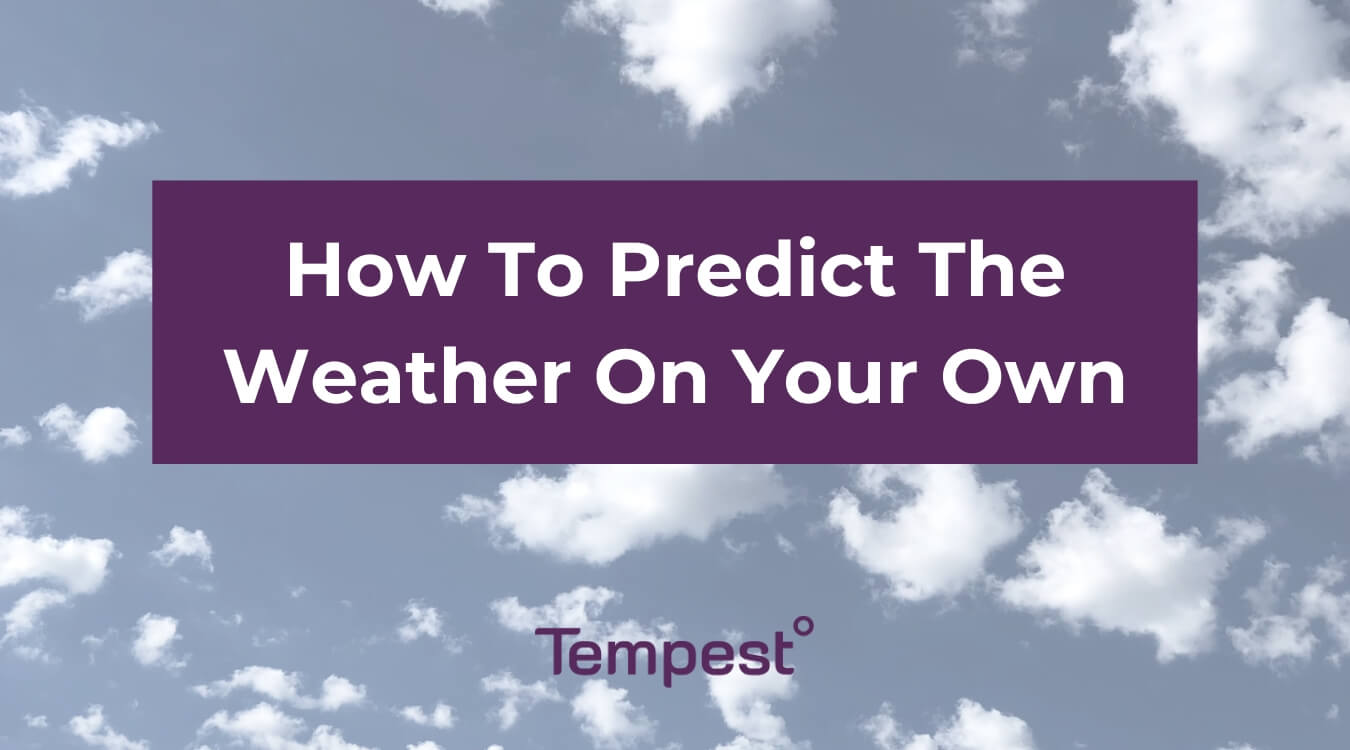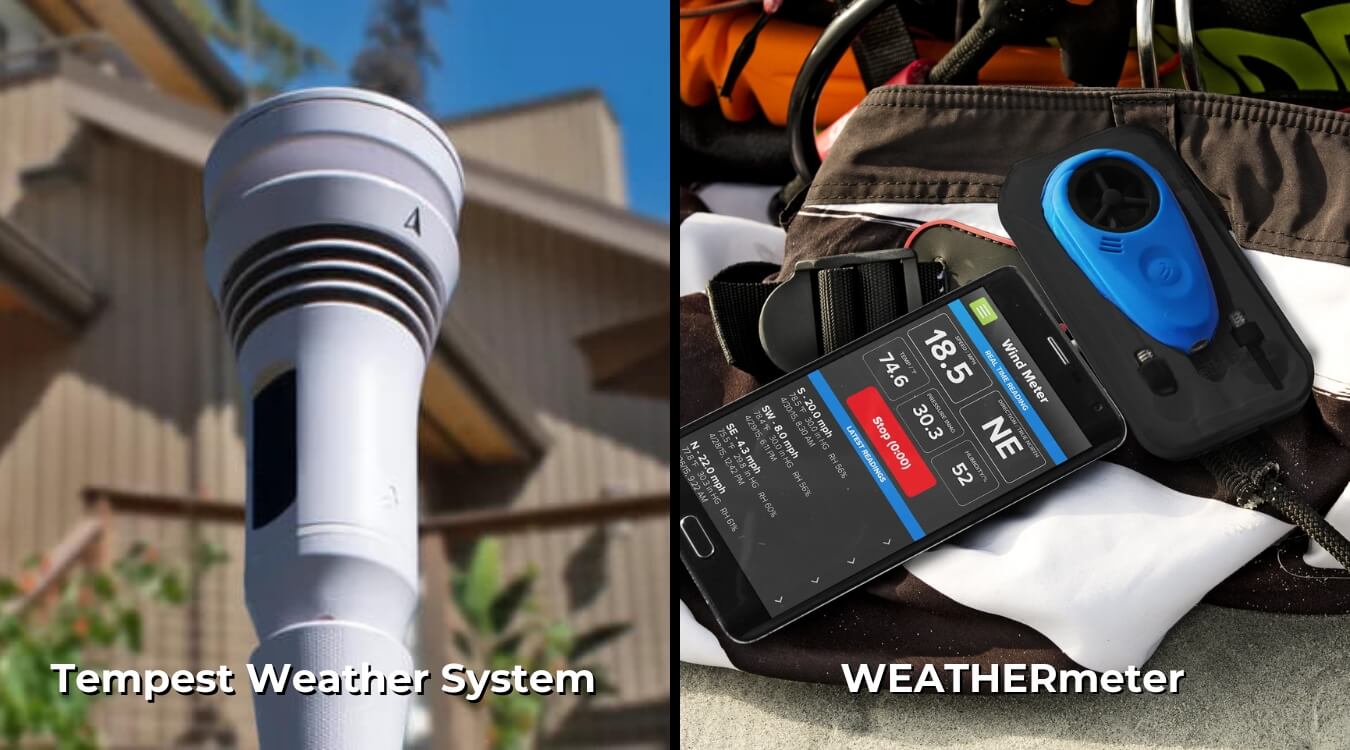Weather forecasts provide a general idea of what’s coming, but weather conditions can change quickly. Knowing how to predict the weather, both at home and outdoors, can help you prepare and avoid surprises.
While meteorologists rely on advanced technology, you don’t need professional equipment to recognize weather patterns. In this guide, we’ll cover simple ways to predict the weather using tools, observations, and natural signs.
Want accurate local forecasts? The Tempest Weather System delivers real-time weather data at home, while the WEATHERmeter provides on-the-go readings.
How Can You Predict Weather?
The easiest way to predict the weather is by using weather instruments like thermometers and barometers. These tools help track changes in temperature and air pressure, which are key indicators of upcoming weather shifts.
For example, a sudden drop in barometric pressure often signals rain or storms. Similarly, high humidity combined with an approaching cold or warm front increases the chances of precipitation.
Nature also provides clues about the weather:
- Dark clouds and strong winds often indicate rain is coming.
- Birds seeking shelter suggest a storm may be approaching.
- People with joint pain may feel increased discomfort before a drop in atmospheric pressure, signaling rain in the coming days.
Why Is The Weather So Hard To Predict?
Weather is unpredictable because multiple factors influence it at once. One weather reading may suggest rain, while another may indicate clear skies. Additionally, chaotic weather systems make it impossible to predict conditions with 100% accuracy.
We also have limitations in data collection, but advanced technology, like Tempest’s Nearcast™ Technology, improves accuracy by combining data from satellites, aircraft, radars, and personal weather stations. This results in high-resolution forecasts tailored to specific locations.
How To Predict The Weather At Home
A personal weather station is the best way to predict weather at home. Devices like the Tempest Weather System provide real-time temperature, humidity, wind speed, and barometric pressure data directly to your phone.
Observing nature also helps. For instance, if there is an increase in spiderwebs and ladybugs indoors, it can indicate colder weather. They seek shelter from dropping temperatures.
The Tempest Weather System is easy to mount and install and integrates with your smart home for instant updates.
How To Predict The Weather Outdoors
When you’re away from home, natural signs and portable tools can help predict weather changes.
Quick ways to forecast the weather in the wild:
- Use a handheld weather meter: Devices like the WEATHERmeter connect to your phone and provide real-time wind speed, temperature, humidity, and pressure readings.
- Look at pinecones: Their scales open when dry and close when humidity increases.
- Watch insect activity: Flies and mosquitoes increase before a storm due to high humidity. They then disappear about an hour before the storm arrives.
- Check grass for dew: Dry grass with strong winds and incoming clouds suggests a storm is approaching.
- Count seconds between lightning and thunder: Every five seconds between a flash and the thunderclap equals about one mile of distance. If a storm is close, seek shelter immediately.
For precise outdoor weather tracking, a WEATHERmeter is an excellent tool for hunting, agriculture, and general outdoor activities.
Get Accurate Local Weather Readings With The Tempest Weather System
Predicting the weather isn’t always easy, but with the right tools and observations, you can make informed decisions. For the most accurate, hyper-local weather data, the Tempest Weather System delivers real-time forecasts straight to your phone. If you’re outdoors, the WEATHERmeter provides instant readings on wind, temperature, and humidity, helping you stay ahead of changing conditions.
Upgrade your weather tracking today with the Tempest Weather System or the WEATHERmeter!


